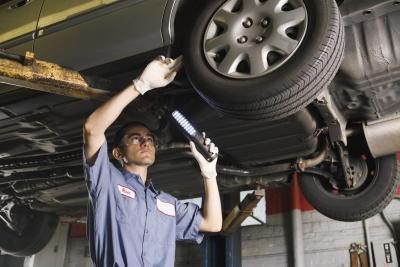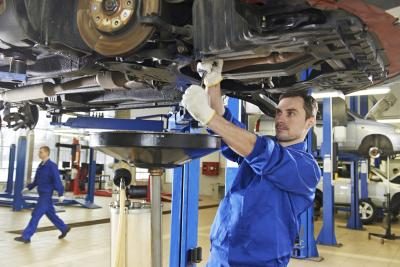Wheel alignment in a vehicle will affect how the vehicle steers and how the tires wear. Premature tire wear on the shoulders or extreme edges of the tires’ treads is a typical symptom of a vehicle with an alignment problem. A vehicle’s alignment refers to how the vehicle’s wheels are positioned in relation to the vehicle itself.

As a car ages, the suspension’s springs will wear out and cause the vehicle to sag. These worn springs can throw off the vehicle’s alignment. Other worn suspension parts, such as the various sockets or joints found on the underside of the vehicle, can affect a vehicle’s alignment. These worn parts change the way the suspension affects the tires’ positions as the vehicle travels down the road.

Accidentally running over a pothole or running into a curb is jarring not only for the passengers in a vehicle, but also for the vehicle itself. The impact from a pothole, curb, road debris or other obstacle can damage a vehicle’s suspension. The force from an impact can bend metal suspension parts or damage the rubber bushings found in the suspension’s joints. The effect is similar to suspension parts that have worn out over time. The suspension changes the way the tires are positioned, throwing off the vehicle’s alignment.

If you raise or lower the height of a vehicle without making the proper adjustments to the vehicle’s suspension settings, the wheels will be out of alignment. Parts such as the control arms on a vehicle have been designed by the manufacturer to work correctly at an exact height; if the height of the vehicle is changed, these parts will cause a misalignment of the tires, says automotive repair website AA1 Car. Raising or lowering a vehicle can require replacing several parts of the vehicle’s suspension to correct any alignment problems.
